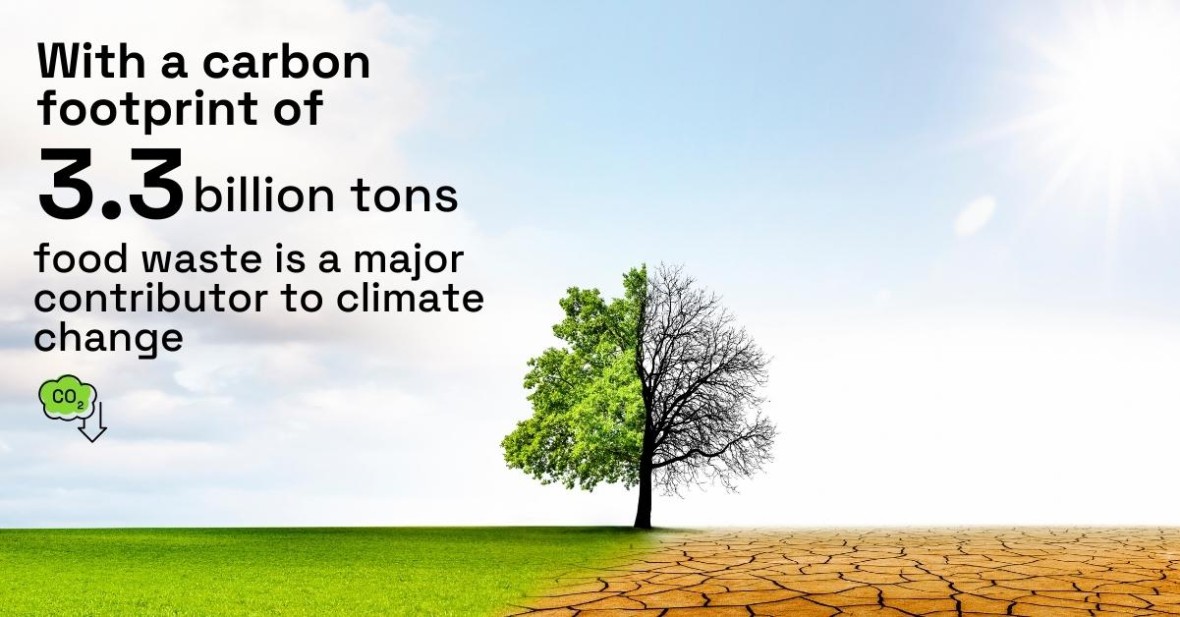20 Facts About Food Waste – Earth.Org

Global Food Waste: A Report on its Impact on Sustainable Development Goals
1. Scale of the Crisis: A Challenge to SDG 12 (Responsible Consumption and Production)
The magnitude of global food waste presents a direct challenge to achieving Sustainable Development Goal 12, which advocates for responsible consumption and production patterns. Target 12.3 specifically aims to halve per capita global food waste at the retail and consumer levels by 2030. Current statistics indicate a substantial gap in meeting this objective.
- Globally, 25-30% of all food produced, equivalent to 1.6 billion tons, is wasted annually. This translates to one billion meals being discarded daily.
- Analysis of 1.05 billion tons of food wasted in 2022 shows that households were the primary source, accounting for 631 million tons (60%), followed by the food service sector at 290 million tons (29%) and the retail sector at 131 million tons (11%).
- In the United States, 66 million tons of food were wasted in 2019 across retail, food service, and residential sectors, representing nearly 40% of the national food supply. Approximately 60% of this waste was disposed of in landfills.
- Waste levels are comparable between developed and developing nations, which lose or waste approximately 670 and 630 million tons of food per year, respectively. The difference in average household food waste between high, upper-middle, and lower-middle income countries is a marginal 7 kilograms per capita per year.
- Annual food loss and waste by category is estimated as follows: 40-50% for root crops, fruits, and vegetables; 35% for fish; 30% for cereals; and 20% for oilseeds, meat, and dairy products.
2. The Paradox of Waste and Hunger: Contradicting SDG 2 (Zero Hunger)
The vast quantity of discarded food creates a stark paradox when viewed against global hunger, directly undermining the objective of SDG 2 (Zero Hunger).
- Households globally waste over one billion edible meals daily. This quantity is sufficient to provide approximately 1.3 meals every day to every individual facing hunger worldwide.
- The food currently wasted in Europe could feed 200 million people, while the amount wasted in Latin America and Africa could each feed 300 million people.
- Projections indicate that to meet global food needs by 2050, food production must increase by 70%. This will require annual cereal production to rise to 3 billion tons and meat production to reach 470 million tons. Reducing waste is critical to achieving this food security goal sustainably.
3. Environmental Degradation: Impacts on SDG 6, SDG 13, and SDG 15
The environmental footprint of food waste significantly impedes progress towards SDG 6 (Clean Water and Sanitation), SDG 13 (Climate Action), and SDG 15 (Life on Land) due to inefficient resource use and pollution.
- Climate Impact (SDG 13): Food loss and waste are responsible for 8-10% of global greenhouse gas emissions, a figure nearly five times greater than the total emissions from the aviation sector. If food waste were a country, it would rank as the third-largest emitter after China and the US. In the United States, organic waste in landfills is the largest source of methane, a greenhouse gas with a warming potential 80 times that of carbon dioxide.
- Water Resources (SDG 6): Agriculture accounts for 92% of the global water footprint. An estimated 24% of the total water used for agricultural production is allocated to food that is ultimately discarded.
- Land Use (SDG 15): An area of land larger than China is used to cultivate food that is never consumed. In the US alone, resources used to produce wasted food include 21% of all freshwater, 19% of fertilizer, and 18% of cropland.
4. Key Drivers of Food Waste
A combination of economic factors, supply chain inefficiencies, and consumer behaviors contribute to the high levels of food waste, highlighting systemic issues related to SDG 12.
- Retail and Supply Chain Practices:
- An emphasis on cosmetic appearance leads to significant waste. In the US, half of all produce, amounting to 60 million tons of fruits and vegetables, is discarded for being deemed “ugly.”
- In Europe, an estimated 40-60% of fish are discarded for failing to meet supermarket quality standards.
- Supermarket promotions can encourage bulk buying, leading consumers to purchase more food than needed, which may result in increased household waste.
- Consumer Knowledge and Behavior:
- A survey indicates that 63% of people do not understand the distinction between “use by” and “best before” labels, leading to the premature disposal of safe-to-eat food.
- Emerging social media trends, such as “Mukbang,” which involve binge-eating for an audience, can promote a culture of excess and contribute to food waste.
- Economic and Cultural Factors:
- Food losses result in lost income for farmers and increased prices for consumers, creating an economic incentive for waste reduction that aligns with SDG 8 (Decent Work and Economic Growth).
- In China, over 35 million tons of food are wasted annually. Cultural practices, such as ordering excess food to display hospitality, contribute significantly to this total.
5. Mitigation Strategies: Composting as a Contribution to the SDGs
Addressing the food waste crisis requires effective management strategies. Composting is an environmentally beneficial method for managing personal food waste that supports the principles of a circular economy and contributes to climate action goals.
- Composting is a process that recycles organic waste into a valuable soil amendment, reducing the volume of waste sent to landfills and thereby mitigating methane emissions (contributing to SDG 13). This practice aligns with the objectives of SDG 12 by promoting the responsible management of resources.
Analysis of the Article in Relation to Sustainable Development Goals
1. Which SDGs are addressed or connected to the issues highlighted in the article?
The article on global food waste addresses several interconnected Sustainable Development Goals (SDGs). The primary issues of food loss, resource depletion, and environmental impact directly link to the following goals:
- SDG 2: Zero Hunger: The article directly connects food waste to global hunger by stating that while “735 million people go hungry globally,” households waste “over 1 billion meals worth of edible food daily.” This highlights the paradox of wasting enough food to feed the hungry, making SDG 2 a central theme.
- SDG 12: Responsible Consumption and Production: This is the most explicitly addressed goal. The entire article is about the unsustainable patterns of food production and consumption that lead to waste. Point 16 directly references the UN’s SDG aim “to halve per capita global food waste at the retail and consumer level and reduce food losses along production and supply chains.”
- SDG 6: Clean Water and Sanitation: The article links food waste to water scarcity. It notes that agriculture consumes “nearly 92% of the global water footprint” and that the water used to produce discarded food “constituted 24% of the total water volume used for production.” This inefficient use of a critical resource is a key concern of SDG 6.
- SDG 13: Climate Action: The article establishes a strong link between food waste and climate change. It states that food loss and waste generate “8-10% of global greenhouse gas emissions,” which is almost five times the emissions from the aviation sector. It further emphasizes that if food loss were a country, it would be the “third-largest greenhouse gas emitter.”
- SDG 15: Life on Land: The impact of food waste on land resources is highlighted. The article mentions that in the US, food waste uses up “18% of cropland” and that globally, “an area larger than China” is used to grow food that is never eaten. This inefficient use of land contributes to habitat loss and land degradation, which are concerns of SDG 15.
2. What specific targets under those SDGs can be identified based on the article’s content?
Based on the issues discussed, the following specific SDG targets can be identified:
- Target 12.3: By 2030, halve per capita global food waste at the retail and consumer levels and reduce food losses along production and supply chains, including post-harvest losses.
- Explanation: This target is explicitly mentioned in point 16 of the article. The statistics provided, such as “25-30% of all food produced worldwide… is wasted” and the breakdown of waste by households (60%), food service (290 million tons), and retail (131 million tons), directly relate to the goal of reducing waste across these levels.
- Target 2.1: By 2030, end hunger and ensure access by all people, in particular the poor and people in vulnerable situations, including infants, to safe, nutritious and sufficient food all year round.
- Explanation: The article implies this target by contrasting the “1 billion meals a day” that are wasted with the “735 million people [who] go hungry globally.” It suggests that reducing food waste is a viable pathway to improving food security and ending hunger.
- Target 6.4: By 2030, substantially increase water-use efficiency across all sectors and ensure sustainable withdrawals and supply of freshwater to address water scarcity.
- Explanation: The article’s data that “24% of the total water volume used for production” is for food that gets discarded points to massive water-use inefficiency. Reducing food waste would directly contribute to achieving this target by saving vast amounts of freshwater.
- Target 13.2: Integrate climate change measures into national policies, strategies and planning.
- Explanation: By identifying food waste as a major contributor to greenhouse gas emissions (“8-10% of global greenhouse gas emissions”), the article implicitly calls for its inclusion in climate action plans. Tackling food waste is presented as a critical strategy for climate change mitigation.
3. Are there any indicators mentioned or implied in the article that can be used to measure progress towards the identified targets?
Yes, the article provides numerous statistics that can serve as indicators to measure progress towards the identified targets.
- For Target 12.3 (Halving food waste):
- Indicator: Total volume of food wasted annually. The article provides a baseline of “1.6 billion tons” and “1.05 billion tons” in 2022.
- Indicator: Percentage of food wasted. The article states this is “approximately 25-30% of all food produced worldwide.”
- Indicator: Food waste by sector. The article provides a breakdown: households (631 million tonnes), food service (290 million tons), and retail (131 million tons). Tracking these numbers would measure progress.
- For Target 2.1 (Ending hunger):
- Indicator: Number of people experiencing hunger. The article cites the figure of “735 million people go hungry globally.” Progress would be measured by a reduction in this number.
- For Target 6.4 (Water-use efficiency):
- Indicator: Volume/percentage of water used for discarded food. The article mentions that this constitutes “24% of the total water volume used for production.” A decrease in this percentage would indicate improved efficiency.
- For Target 13.2 (Climate action):
- Indicator: Percentage of global greenhouse gas emissions from food waste. The article provides a baseline of “8-10%.” Reducing this percentage is a clear measure of progress in mitigating climate change through food waste reduction.
- For SDG 15 (Life on Land):
- Indicator: Amount of cropland used for uneaten food. The article provides figures like “18% of cropland” in the US and a global area “larger than China.” Reducing this area would be a key performance indicator.
4. Summary Table of SDGs, Targets, and Indicators
| SDGs, Targets and Indicators | Targets | Indicators |
|---|---|---|
| SDG 12: Responsible Consumption and Production | Target 12.3: Halve per capita global food waste at the retail and consumer levels and reduce food losses along production and supply chains. | – Total annual food waste (1.6 billion tons). – Percentage of food produced that is wasted (25-30%). – Waste breakdown by sector (Household: 60%, Food Service: 290M tons, Retail: 131M tons). |
| SDG 2: Zero Hunger | Target 2.1: End hunger and ensure access by all people to safe, nutritious and sufficient food. | – Number of people facing hunger (735 million). – Number of meals wasted daily (over 1 billion). |
| SDG 13: Climate Action | Target 13.2: Integrate climate change measures into national policies, strategies and planning. | – Percentage of global greenhouse gas emissions from food waste (8-10%). |
| SDG 6: Clean Water and Sanitation | Target 6.4: Substantially increase water-use efficiency across all sectors. | – Percentage of agricultural water used for discarded food (24%). – Percentage of freshwater supply used for uneaten food (25%). |
| SDG 15: Life on Land | Target 15.1: Ensure the conservation, restoration and sustainable use of terrestrial and inland freshwater ecosystems. | – Area of land used to grow uneaten food (globally, an area larger than China; 18% of cropland in the US). |
Source: earth.org

What is Your Reaction?
 Like
0
Like
0
 Dislike
0
Dislike
0
 Love
0
Love
0
 Funny
0
Funny
0
 Angry
0
Angry
0
 Sad
0
Sad
0
 Wow
0
Wow
0
















































/environment-climate-change-and-health-(ech)/water-sanitation-hygiene-and-health-(wsh)/landfill-tuvalu-36092.tmb-1200v.jpg?sfvrsn=5c21fe40_1#)

.jpg.webp?itok=0ZsAnae9#)


























